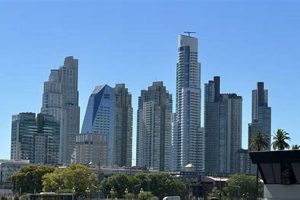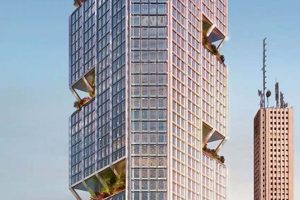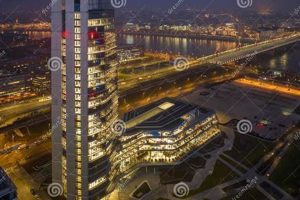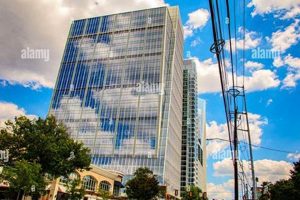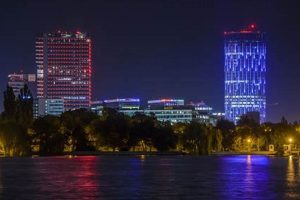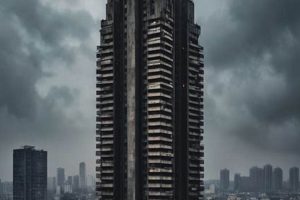Taipei 101 is a skyscraper located in Taipei, Taiwan. It was the tallest building in the world from its completion in 2004 until 2010 and remains the tallest green building in the world. The building is designed to withstand typhoons and earthquakes and has a number of environmentally friendly features, such as a rainwater collection system and a solar power system.
Taipei 101 is a major tourist attraction and offers stunning views of the city from its observation deck. The building also houses a number of shops, restaurants, and offices. Taipei 101 is a symbol of Taiwan’s economic and technological prowess and is a must-see for any visitor to the city.
Here are some of the main topics that will be covered in the main article on Taipei 101:
- History and construction of Taipei 101
- Architectural design and features of Taipei 101
- Environmental sustainability of Taipei 101
- Taipei 101 as a tourist attraction
- The impact of Taipei 101 on the Taipei cityscape
1. Height
The height of Taipei 101 is a defining characteristic that has contributed significantly to its global recognition and iconic status. Standing at 508 meters, it was once the world’s tallest building, a testament to the engineering prowess and architectural ambition of Taiwan. This extraordinary height has several implications:
- Global Recognition: Taipei 101’s height has placed it among the most recognizable buildings worldwide. Its distinct silhouette has become synonymous with Taipei’s skyline and has contributed to Taiwan’s international visibility.
- Engineering Marvel: Constructing a building of such height requires exceptional engineering expertise and innovative techniques. Taipei 101’s ability to withstand strong winds and seismic activity exemplifies the advanced engineering capabilities involved in its design.
- Tourism and Observation: The height of Taipei 101 has made it a major tourist attraction. Its observation deck offers breathtaking panoramic views of Taipei and the surrounding area, attracting visitors from around the globe.
Understanding the significance of Taipei 101’s height is essential for appreciating its architectural and cultural value. It represents a remarkable achievement in modern construction and serves as a symbol of Taiwan’s economic and technological prowess.
2. Green Building
Taipei 101’s commitment to sustainability is evident in its LEED Platinum certification, the highest level of recognition for green buildings. This certification signifies that the skyscraper meets rigorous environmental standards, incorporating sustainable practices into its design, construction, and operation.
- Rainwater Collection: Taipei 101 has implemented a rainwater collection system that captures and stores rainwater for non-potable uses, such as irrigation and flushing toilets. This system reduces the building’s reliance on municipal water sources and contributes to water conservation.
- Solar Power: The skyscraper utilizes solar panels to generate renewable energy, reducing its dependence on fossil fuels. The solar panels are integrated into the building’s faade, contributing to its overall energy efficiency.
- Energy-Efficient Lighting: Taipei 101 employs energy-efficient lighting systems throughout the building, including LED and fluorescent lighting. These systems consume less energy compared to traditional lighting, resulting in reduced electricity consumption.
- Green Materials: Sustainable materials were used in the construction of Taipei 101, including recycled steel and low-VOC (volatile organic compound) materials. These materials contribute to improved indoor air quality and reduce the building’s environmental impact.
These green building practices collectively contribute to Taipei 101’s reduced environmental footprint. The skyscraper serves as an exemplary model of sustainable architecture, showcasing how modern buildings can incorporate environmentally friendly features without compromising design or functionality.
3. Wind-resistant
Taipei 101’s wind-resistant design is a crucial aspect of its structural integrity, particularly in a region prone to typhoons. Its innovative damper system plays a pivotal role in ensuring the skyscraper’s stability during strong winds.
The damper system consists of a massive steel ball suspended within a large pendulum near the top of the building. As strong winds cause the building to sway, the ball swings in the opposite direction, counteracting the building’s movement and reducing vibrations. This ingenious system effectively minimizes the risk of structural damage and provides a safe and stable environment for occupants.
The importance of Taipei 101’s wind-resistant design cannot be overstated, as typhoons are a common occurrence in Taiwan. The building has successfully withstood several typhoons since its completion in 2004, including Typhoon Soudelor in 2015, which brought wind speeds of up to 180 kilometers per hour. Taipei 101’s ability to remain stable during such extreme weather conditions is a testament to its exceptional engineering and design.
4. Observation Deck
Taipei 101’s observation deck is an integral part of its attraction as a tourist destination, offering visitors unparalleled views of the city and its surroundings. The deck, located on the 89th floor of the skyscraper, provides a 360-degree panorama that showcases Taipei’s vibrant cityscape, iconic landmarks, and the surrounding mountains.
- Unrivalled Views: The observation deck offers unobstructed views of Taipei and its surroundings. Visitors can enjoy breathtaking vistas of the city’s skyscrapers, historical landmarks, and natural beauty, making it a popular spot for photography and sightseeing.
- Tourist Attraction: The observation deck is a major tourist attraction in Taipei, drawing visitors from around the world. It provides a unique opportunity to experience the city from a different perspective, capturing the essence of its urban landscape and natural surroundings.
- Educational Value: The observation deck also has educational value, as it provides visitors with a bird’s-eye view of Taipei’s geography and urban planning. It helps visitors understand the city’s layout, identify landmarks, and appreciate its architectural diversity.
In conclusion, Taipei 101’s observation deck is a significant aspect of the skyscraper’s appeal, offering breathtaking views, serving as a tourist attraction, providing educational value, and holding cultural significance. It allows visitors to experience Taipei from a unique perspective, contributing to the skyscraper’s status as an iconic landmark and a symbol of the city’s kemajuan.
5. Shopping Mall
The presence of a luxurious shopping mall within Taipei 101 is not merely an ancillary feature but an integral part of the skyscraper’s multifaceted identity. The shopping mall serves as a vibrant hub that complements the skyscraper’s other functions, contributing to its overall appeal and significance.
- Commercial Center: Taipei 101’s shopping mall is a bustling commercial center that houses a wide array of retail outlets, from luxury boutiques to international brands and local businesses. This diverse range of shops caters to a discerning clientele, offering a premium shopping experience within the skyscraper’s prestigious address.
- Destination for Tourists: The shopping mall has become a popular destination for tourists visiting Taipei 101. It provides a convenient and luxurious environment for visitors to indulge in retail therapy while enjoying the skyscraper’s other attractions, such as the observation deck and restaurants.
- Convenience for Tenants and Employees: The shopping mall also serves the practical needs of the skyscraper’s tenants and employees. It offers a range of amenities, including dining options, convenience stores, and services, creating a self-contained ecosystem within the building.
- Symbol of Taipei’s Urban Sophistication: The presence of a luxurious shopping mall within Taipei 101 reflects the city’s growing sophistication and its status as a modern metropolis. The mall’s high-end retail offerings cater to the discerning tastes of Taipei’s affluent residents and international visitors.
In conclusion, the shopping mall within Taipei 101 is not just a retail space but an essential component that enhances the skyscraper’s functionality, appeal, and symbolism. It contributes to Taipei 101’s reputation as a world-class landmark and a reflection of Taipei’s urban sophistication.
6. Offices
Taipei 101’s status as a prominent business hub is inextricably linked to its numerous offices, which house a diverse range of local and multinational companies. This facet of the skyscraper contributes significantly to its overall significance and impact on Taipei’s economy and business landscape.
- Centralized Business Location: Taipei 101’s central location in Taipei’s Xinyi District, known for its concentration of financial institutions and corporate headquarters, makes it an ideal location for businesses seeking proximity to industry peers and clients. This centralization fosters a vibrant business ecosystem and facilitates collaboration and networking opportunities.
- Prestige and Recognition: Occupying office space within Taipei 101 confers a sense of prestige and recognition upon businesses. The skyscraper’s iconic status and reputation as a landmark of architectural excellence and technological innovation enhance the corporate image of its tenants, attracting reputable and successful companies.
- World-Class Amenities and Infrastructure: Taipei 101 provides its tenants with access to world-class amenities and infrastructure that support business operations and employee well-being. These include high-speed elevators, advanced telecommunications systems, and a comprehensive range of retail, dining, and leisure facilities within the building.
- Economic Impact: The concentration of businesses within Taipei 101 contributes to the economic vitality of Taipei and Taiwan as a whole. The skyscraper serves as a hub for job creation, tax revenue generation, and foreign investment, fostering economic growth and prosperity.
In conclusion, Taipei 101’s numerous offices are not merely a collection of workspaces but a vital component that cements its position as a significant business hub. They attract reputable companies, enhance corporate image, provide access to amenities and infrastructure, and contribute to the economic prosperity of Taipei and Taiwan.
7. Cultural Symbol
Taipei 101 skyscraper is not just a towering architectural marvel but also a potent cultural symbol that embodies Taiwan’s remarkable economic and technological achievements. Its iconic status has transcended its physical presence, transforming it into a symbol of national pride and a testament to Taiwan’s progress on the global stage.
- Symbol of Economic Success: Taipei 101’s construction and completion in 2004 coincided with Taiwan’s emergence as a major economic force in Asia. Its height and grandeur became synonymous with the country’s rapid economic growth and prosperity, showcasing Taiwan’s ability to compete with the world’s leading economies.
- Technological Prowess: The skyscraper’s innovative design and engineering feats, such as its wind-resistant structure and energy-efficient systems, demonstrate Taiwan’s technological capabilities and its commitment to sustainable development. Taipei 101 stands as a symbol of Taiwan’s engineering excellence and its drive for innovation.
- National Pride: Taipei 101 has become a source of immense national pride for the people of Taiwan. Its iconic silhouette is a familiar sight in Taipei’s skyline and has been featured in countless images, films, and other cultural representations of Taiwan. The skyscraper serves as a tangible reminder of Taiwan’s accomplishments and inspires a sense of unity and patriotism among its citizens.
- Global Recognition: Taipei 101’s status as a cultural symbol extends beyond Taiwan’s borders. It has gained international recognition as a symbol of Taiwan’s modernity and progress, attracting tourists from around the world who come to witness its architectural splendor and experience the vibrant city of Taipei.
In conclusion, Taipei 101 skyscraper’s cultural significance lies in its embodiment of Taiwan’s economic success, technological prowess, national pride, and global recognition. It has become an enduring symbol of Taiwan’s transformation and a testament to its people’s determination and ingenuity.
8. Architectural Beauty
Taipei 101 skyscraper’s architectural beauty stems from its unique design, which harmoniously blends elements of traditional Chinese architecture with modern aesthetics. This fusion creates a visually striking and cu
lturally significant landmark that reflects Taiwan’s rich heritage and its embrace of contemporary design.
The skyscraper’s design draws inspiration from traditional Chinese architecture, particularly the pagoda style. The pagoda-like structure, with its tiered setbacks and intricate detailing, is a nod to the cultural and historical significance of pagodas in Chinese architecture. By incorporating these elements into a modern skyscraper, Taipei 101 pays homage to Taiwan’s past while showcasing its architectural innovation.
The use of traditional Chinese motifs and patterns further enhances the skyscraper’s cultural significance. For instance, the exterior facade features auspicious symbols such as the “ruyi” (a cloud-shaped symbol of good fortune) and the “chilong” (a mythical dragon-like creature). These symbols not only add aesthetic appeal but also imbue the building with cultural meaning and symbolism.
The integration of traditional Chinese architectural elements with modern design principles creates a visually captivating and distinctive skyscraper. Taipei 101’s unique architectural style has garnered international recognition and has become a symbol of Taipei’s embrace of both tradition and modernity.
9. Engineering Feat
Taipei 101 skyscraper stands as a testament to the remarkable achievements of modern engineering. Its innovative design and construction techniques have made it a marvel of structural engineering and a global icon.
One of the key engineering feats of Taipei 101 is its wind-resistant design. Located in a region prone to typhoons, the skyscraper employs a unique damper system to counteract strong winds. This system consists of a massive steel ball suspended within a large pendulum near the top of the building. As strong winds cause the building to sway, the ball swings in the opposite direction, reducing vibrations and ensuring the stability of the structure.
Another innovative aspect of Taipei 101 is its use of high-strength concrete and steel. These materials provide exceptional strength and durability, enabling the skyscraper to withstand earthquakes and other seismic activities. The building’s exterior is clad in a curtain wall system made of double-glazed glass panels, which helps to reduce wind loads and provides thermal insulation.
The engineering prowess behind Taipei 101 extends to its foundation as well. The skyscraper is built on a concrete raft foundation that is 8.5 meters thick and covers an area of 10,000 square meters. This massive foundation provides a stable base for the building and helps to distribute its weight evenly.
Taipei 101’s engineering feats have not only made it a structural marvel but have also contributed to its environmental sustainability. The building’s aerodynamic design and energy-efficient systems have earned it a LEED Platinum certification, making it one of the most sustainable skyscrapers in the world.
In conclusion, Taipei 101 skyscraper is a triumph of engineering that showcases innovative construction techniques and materials. Its wind-resistant design, use of high-strength materials, and sustainable features make it a global icon and a testament to the ingenuity of modern engineers.
Frequently Asked Questions about Taipei 101 Skyscraper
This section provides concise answers to commonly asked questions about Taipei 101, addressing various aspects of its design, engineering, and significance.
Question 1: What is the height of Taipei 101?
Answer: Taipei 101 stands at a height of 508 meters (1,667 feet), making it one of the tallest buildings in the world.
Question 2: When was Taipei 101 built?
Answer: Construction of Taipei 101 began in 1999 and was completed in 2004.
Question 3: What is the architectural style of Taipei 101?
Answer: Taipei 101’s architectural design blends traditional Chinese elements with modern aesthetics, incorporating motifs and patterns inspired by traditional Chinese architecture.
Question 4: Is Taipei 101 earthquake-resistant?
Answer: Yes, Taipei 101 is designed to withstand earthquakes. It features a tuned mass damper system and is built on a reinforced concrete foundation to ensure stability during seismic activity.
Question 5: What is the significance of Taipei 101?
Answer: Taipei 101 is not only a landmark building but also a symbol of Taiwan’s economic and technological achievements. It represents the country’s progress and modernity.
Question 6: Can visitors go to the top of Taipei 101?
Answer: Yes, visitors can purchase tickets to access the Taipei 101 Observatory on the 89th floor, which offers panoramic views of the city.
Summary: Taipei 101 is a remarkable skyscraper that combines innovative engineering with traditional architectural influences. It stands as a testament to Taiwan’s economic and technological prowess, attracting visitors from around the world.
Transition to the next article section: Taipei 101’s unique design and impressive engineering have made it a global icon. In the next section, we will delve deeper into the architectural and engineering aspects of this extraordinary building.
Tips for Visiting Taipei 101 Skyscraper
To make the most of your visit to Taipei 101, consider these practical tips:
Tip 1: Purchase Tickets in Advance:
Taipei 101 is a popular tourist destination, so it’s advisable to purchase tickets online or through authorized vendors in advance, especially during peak season. This will allow you to secure your desired time slot and avoid long queues.
Tip 2: Arrive Early:
Arrive at Taipei 101 early to allow ample time for security checks and to avoid crowds. This will give you more time to explore the building and enjoy the views from the observatory.
Tip 3: Dress Appropriately:
Taipei 101 is a business and tourist destination, so it’s recommended to dress respectfully. Smart casual attire is generally acceptable, but avoid wearing shorts, tank tops, or flip-flops.
Tip 4: Respect the Building:
Taipei 101 is a public space, so it’s important to be respectful of the building and its surroundings. Avoid littering, causing noise, or engaging in any disruptive behavior.
Tip 5: Capture Panoramic Views:
The Taipei 101 Observatory offers breathtaking panoramic views of the city. Bring a camera to capture the stunning vistas, including iconic landmarks like the Sun Yat-sen Memorial Hall and the Keelung River.
Summary: By following these simple tips, you can maximize your visit to Taipei 101 and fully appreciate its architectural splendor and panoramic views.
Transition to the conclusion: Taipei 101 is more than just a skyscraper; it’s a symbol of Taipei’s modernity and progress. Its innovative design, engineering feats, and cultural significance make it a must-visit destination for anyone visiting the city.
Conclusion
Taipei 101 skyscraper stands as a testament to human ingenuity, engineering prowess, and architectural brilliance. Its innovative design, wind-resistant structure, and green building features have made it a global icon and a symbol of Taiwan’s economic and technological achievements.
Beyond its architectural marvels, Taipei 101 has become a cultural landmark, embodying Taiwan’s rich heritage and its embrace of modernity. Its unique blend of traditio
nal and contemporary elements reflects the country’s dynamic spirit and its commitment to progress.
As a symbol of Taipei’s urban sophistication, Taipei 101 continues to inspire and captivate visitors from around the world. Its towering presence on the city’s skyline serves as a reminder of Taiwan’s remarkable transformation and its bright future.


